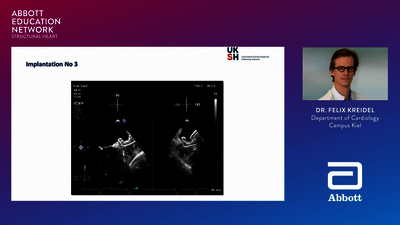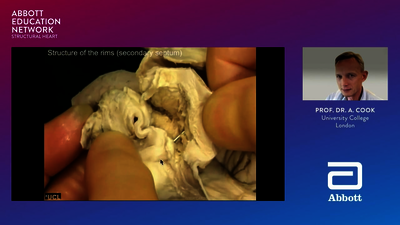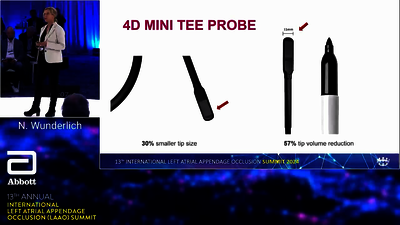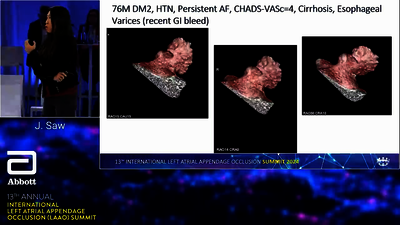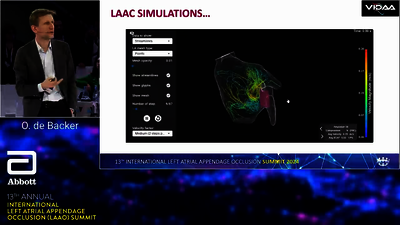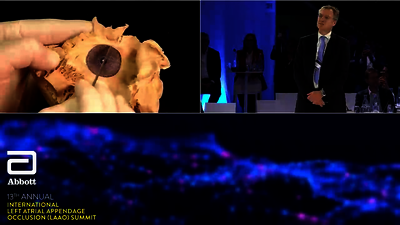STROKE RISK FACTORS
Atrial fibrillation (AF) is associated with a 5-fold increase in the risk of ischemic stroke.1 Left atrial appendage (LAA) closure reduces the risk of stroke in non-valvular AF patients (NVAF) who are seeking an alternative to oral anticoagulants.2,3
SWITCH TO THE interventional VIEW For more information specific to interventional cardiology regarding LAA Occlusion
HOW DOES IT WORK?
PROCEDURAL ANIMATION
Procedure animation with the Amplatzer™ Amulet™ Left Atrial Appendage Occluder. Dual sealing technology provides better closure and protects patients from ischemic strokes.
SUPPORTED BY GUIDELINES, PROVEN BY DATA
REDUCING STROKE RISK
“What this therapy [use of the Amplatzer™ Amulet™ LAA Occluder] does for the patient is twofold. One, it physically deals with the problem and reduces the risk of stroke very substantially. But more than that, it also offers patients a peace of mind.”
David Hildick-Smith, MD,
Royal Sussex County Hospital, Brighton, England
PROVEN RISK REDUCTION: AMPLATZER™ AMULET™ OCCLUDER VERSUS MEDICAL MANAGEMENT
In a propensity score-matched study of 302 patients, 151 were treated with left atrial appendage occlusion and 151 were treated with medical management.1

LAAO REFERRAL BEST PRACTICE: SHARED DECISION MAKING
ENGAGE AND EDUCATE THE PATIENT
- Discuss stroke prevention options
- Risks and benefits
- What is an LAAO procedure?
- What is the recovery process?
- Patient guides and educational materials
RULE OUT PHARMACOLOGICAL OPTIONS OF STROKE PREVENTION FOR AF PATIENTS
- Is the patient at high stroke or bleeding risk (CHA2DS2VASc† and HAS-BLED)?
- Is there a medical risk for restarting or continuing pharmacological stroke prevention management?
PROCEDURAL PLANNING
- Pre-computerized tomography (CT)/transesophageal echocardiography (TEE) protocol
- Pre-procedure medications
- Discuss post-procedure medications
- Assess patients’ medical condition educational materials
FEEDBACK AND FOLLOW-UP
- Feedback to referring physician
- Follow-up protocols
- Discuss who will manage continuing monitoring of patients
†CHA2DS2VASc SCORE TOOL6
| CONDITION | POINTS | |
|---|---|---|
| C | Congestive heart failure | 1 |
| H | Hypertension | 1 |
| A2 | Age ≥ 75 years | 2 |
| D | Diabetes mellitus | 1 |
| S2 | Stroke/Transient ischemic attack (TIA) | 2 |
| V | Vascular disease | 1 |
| A | Age 65–74 years | 1 |
| Sc | Sex category (female) | 1 |
‡HAS-BLED SCORE TOOL2
| CONDITION | POINTS | |
|---|---|---|
| H | Hypertension | 1 |
| A | Renal/liver dysfunction | 1 or 2 |
| S | Stroke | 1 |
| B | Bleeding | 1 |
| L | Labile international normalized ratios (INRs) | 2 |
| E | Elderly (age > 65 years) | 1 |
| D | Drugs or alcohol abuse | 1 or 2 |
EXPERT DEBATE: ESOC 2023
Which patient might benefit from LAAO: A case based debate
ESOC 2023 - Prof. Diener: in favor Left Atrial Appendage Occlusion
ESOC 2023 - Dr. Rubiera: not in favor of Left Atrial Appendage Occlusion
TV
TV
- 1. Kirchhof P, Benussi S, Kotecha D, et al. 2016 ESC Guidelines for the management of atrial fibrillation developed in collaboration with EACTS. Eur Heart J. 2016;37(38):2893–2962. doi.org/10.1093/eurheartj/ehw210.
- Diener H-C, Landmesser U. Percutaneous left atrial appendage occlusion for stroke prevention in patients with atrial fibrillation. Future Neurol. 2020;15(3).https://doi.org/10.2217/fnl-2020-0001.
